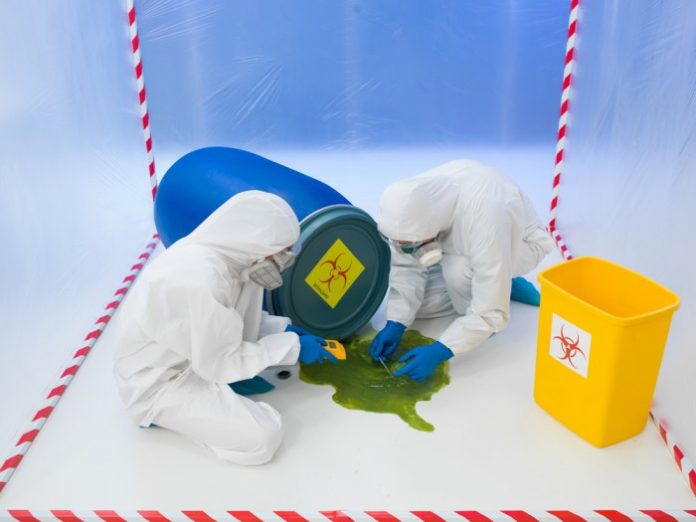Every facility that deals with hazardous materials should be well-equipped and aware of the correct procedures to undergo if a spill were to happen. Spill management and spill response strategies should be included during the emergency planning, and every facility should have multiple (if not all) employees trained in the procedures. This way, a spill can be controlled, and the consequences will be limited to the minimum, regardless of whether the spill is major or minor.
That said, every facility should be equipped with spillage control equipment such as spill kits. There is no universal spill kit that is applicable in every spill. Most spill kits are specific, and the ones you get for your facility should be relevant for the type of chemical you deal with on a daily basis. Moreover, the spill kit should have a visible label, and it should be located in an easily accessible spot. All employees should know how to use the spill kit, and should be aware of their positions as well.
A typical spillage control kit will include a suitable absorbent for the spill, a barrier to help contain the spill, gloves that are appropriate for the chemicals used in the facility, warning signs, waste containers where the spilled materials and waste can be placed, specific PPE like face shields, dust masks or respirators, and neutralisation reagents like boric acid for alkalis or sodium bicarbonate for acids.
As briefly aforementioned, spills are classified as either minor or major. But how do you know whether a spill is minor or major? There are a few clear indicators that determine it. If the answer to any of the following questions is ‘yes’, then a spill is definitely major, and you should respond appropriately (we’ll discuss the respond methods shortly).
- Does the spill pose an immediate fire hazard?
- Does the quantity of the spill pose a danger?
- Is the spill uncontained and does it pose a danger to the environment?
- Is the material of high risk, such as mercury?
As a general rule, if the quantity of the spill is more than 100ml of highly hazardous or carcinogenic material or 1 litre of flammable or volatile solvent, corrosive or reactive base or acid liquid, then it’s considered a major spill. For some materials that pose an extremely high risk like mercury, the threshold is less than 100ml. Hazardous materials that can pose an instant threat to human or environmental safety and health, like uncontrolled gas leaks, are also considered major spills.
Major spills typically cannot be dealt with immediately, and usually result in immediate evacuation of the premises. Every employee should take the necessary precautions and protect themselves. The area of the spill should be isolated and its access should be highly controlled. An alarm should be raised, and spillage control experts should be called as soon as possible. First aid should be applied if necessary, and an ambulance should be called to get potentially hurt people into a hospital. With the help of experts’ assistance, the area should be decontaminated and the spread should be minimised and then cleanup procedures should take place. Once everything is properly cleaned up, the situation should be reviewed.
A minor spill, on the other hand, poses no immediate threat, but should still be dealt with accordingly. First and foremost, the employees dealing with it should wear proper protection gear like goggles, chemically resistant gloves, enclosed footwear, a half or full face respirator with the appropriate filters, and a specialised coat.
Next, other people in the area should be notified. Have someone stand in the busy pathways and corridors and alert passerby to ensure the area is kept safe and free of traffic. The chemicals then need to be identified, and a trained employee should judge the situation and respond accordingly. But regardless of the situation, it should always be approached with maximum care, simply because many harmful chemicals have no offensive odour or colour.
That being said, never assume a chemical is completely harmless and avoid breathing from its vapours. Contaminate it with a barrier and use an absorbent from a spill kit. After the area is decontaminated, clean it up promptly and neutralise any alkalis and acids. After you’ve disposed of the contaminants, review the area completely, and check the surroundings for damage or contamination.
But as is the case with everything else, it’s better to prevent than heal. Obviously, accidents and mishaps happen, but if you’re dealing with hazardous chemicals and materials, it’s always a good idea to use proper storage methods, transport and handling of equipment, etc. For instance, store gas in specialised gas storage cages, aerosol in aerosol storage cages, flammable liquids in specialised cabinets, use safety cabinets for your corrosive goods, etc. These products not only increase the safety for every employee on-site, but they also increase their peace of mind, allowing them to work more efficiently and confidently.
Find a Home-Based Business to Start-Up >>> Hundreds of Business Listings.

















































